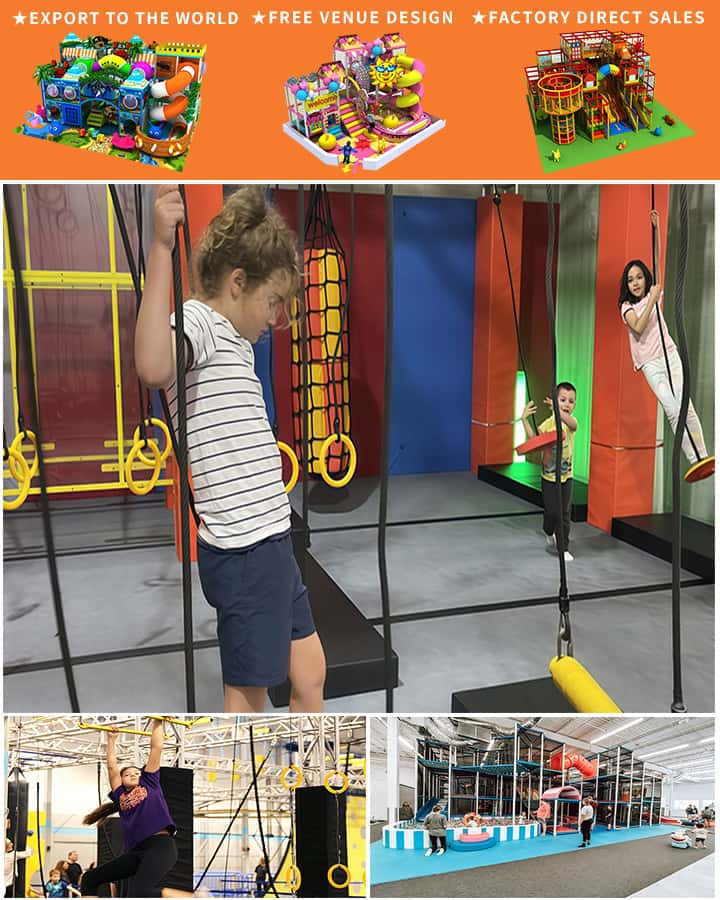In recent years, the demand for commercial indoor playground equipment in New Zealand has significantly increased. With families seeking engaging and safe activities for their children, especially during unfavorable weather or when outdoor play is limited, indoor playgrounds have become increasingly popular. This article explores the various aspects of commercial indoor playground equipment available in NZ, highlighting its benefits, types, and considerations for potential investors.
The Rising Popularity of Indoor Playgrounds
Indoor playgrounds have gained traction across New Zealand as a go-to destination for families looking to provide their children with fun and enriching experiences. Unlike traditional outdoor playgrounds that are often weather-dependent, indoor ones offer a controlled environment where kids can play year-round. These facilities are particularly appealing during the colder months when outdoor recreational options are limited.
Moreover, the growing awareness of the importance of physical activity for children’s development has further boosted the popularity of indoor playgrounds. These venues not only offer a variety of physical activities but also help in developing motor skills, social interactions, and cognitive abilities through imaginative play.
Types of Commercial Indoor Playground Equipment
Soft Play Areas
One of the most common features in indoor playgrounds is soft play areas. These include foam pits, ball pools, and climbing structures covered with soft materials to ensure safety. Soft play areas are perfect for toddlers and young children, providing them a space to engage in physical activity without the risk of serious injury.
Trampoline Parks
 Trampoline parks have become a significant trend in NZ. They offer numerous interconnected trampolines along with additional attractions like trampoline basketball hoops and foam pit jumps. These parks cater to a broader age range, making them an excellent choice for both younger children and teenagers.
Trampoline parks have become a significant trend in NZ. They offer numerous interconnected trampolines along with additional attractions like trampoline basketball hoops and foam pit jumps. These parks cater to a broader age range, making them an excellent choice for both younger children and teenagers.
Climbing Walls and Ropes Courses
Another popular type of equipment is climbing walls and ropes courses. These structures offer varying levels of difficulty, challenging children’s strength and coordination while providing a fun experience. Many indoor playgrounds incorporate these elements into their design to cater to older children and adventurous youths.
Interactive Play Equipment
Interactive play equipment such as slides, tunnels, and obstacle courses are essential components of any indoor playground. These installations encourage physical activity and can be customized to fit different themes and spaces, adding a unique charm to each facility.
Benefits for Children and Families
Indoor playgrounds offer numerous benefits for both children and their families. For children, regular visits to these playgrounds promote physical fitness, enhance motor skills, and stimulate creativity. Social interaction with peers also helps in developing communication and teamwork abilities.
For parents, indoor playgrounds provide a convenient and safe environment where they can allow their children to expend energy and enjoy themselves. Additionally, many indoor playgrounds offer amenities such as cafes and seating areas, giving parents a place to relax while keeping an eye on their little ones.
Considerations for Investors
Investing in commercial indoor playground equipment requires careful planning and consideration. Here are some key factors to keep in mind:
Location: Choose a location with high foot traffic and easy accessibility. Proximity to residential areas, shopping centers, or educational institutions can significantly impact the success of your indoor playground.
Target Audience: Tailor your equipment and services to suit the needs of your target audience. Consider age-appropriate equipment and activities to ensure safety and enjoyment for all visitors.
Safety Standards: Adhere to strict safety standards and regulations to create a secure environment for children. Regular maintenance and inspections are essential to uphold safety protocols.
Market Research: Conduct thorough market research to understand local demand, competition, and trends. This will help in creating a unique selling proposition for your indoor playground.
Operational Costs: Plan for operational costs, including staffing, utilities, and equipment maintenance. A detailed business plan will help manage finances effectively and ensure long-term sustainability.
Conclusion
The market for commercial indoor playground equipment in New Zealand continues to thrive, driven by increasing demand from families seeking safe and engaging play environments for their children. By understanding the different types of equipment available, their benefits, and crucial considerations for investment, entrepreneurs can tap into this lucrative market. With thoughtful planning and a commitment to safety and quality, indoor playgrounds can become a cherished community resource, offering endless fun and developmental opportunities for children across New Zealand.




